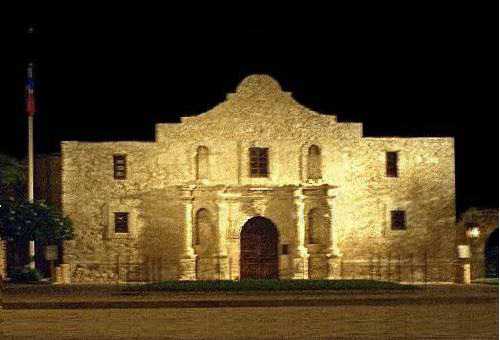





Easter (Greek: Πάσχα,(Ethiopic), Pascha) is an important annual religious feast in the Christian liturgical year. In Christian belief, Jesus was resurrected from the dead three days after his crucifixion. Many Christian denominations celebrate this resurrection on Easter Day or Easter Sunday (also Resurrection Day or Resurrection Sunday), two days after Good Friday. The chronology of his death and resurrection is variously interperated to be between 26 and 36 AD.
Easter also refers to the season of the church year called Eastertide or the Easter Season. Traditionally the Easter Season lasted for the forty days from Easter Day until Ascension Day but now officially lasts for the fifty days until Pentecost. The first week of the Easter Season is known as Easter Week or the Octave of Easter. Easter also marks the end of Lent, a season of prayer and penance.
Easter is a moveable feast, meaning it is not fixed in relation to the civil calendar. Easter falls at some point between late March and late April each year (early April to early May in Eastern Christianity), following the cycle of the Moon. After several centuries of disagreement, all churches accepted the computation of the Alexandrian Church (now the Coptic Church) that Easter is the first Sunday after the Paschal Full Moon, which is the first moon whose 14th day (the ecclesiastic "full moon") is on or after March 21 (the ecclesiastic "vernal equinox").
Easter is linked to the Jewish Passover not only for much of its symbolism but also for its position in the calendar. It is also linked to Spring Break, a secular school holiday (customarily a week long) celebrated at various times across North America, and characterized by road trips and bacchanalia.
Cultural elements, such as the Easter Bunny, have become part of the holiday's modern celebrations, and those aspects are often celebrated by many Christians and non-Christians alike. There are also some Christian denominations who do not celebrate Easter.
Easter also refers to the season of the church year called Eastertide or the Easter Season. Traditionally the Easter Season lasted for the forty days from Easter Day until Ascension Day but now officially lasts for the fifty days until Pentecost. The first week of the Easter Season is known as Easter Week or the Octave of Easter. Easter also marks the end of Lent, a season of prayer and penance.
Easter is a moveable feast, meaning it is not fixed in relation to the civil calendar. Easter falls at some point between late March and late April each year (early April to early May in Eastern Christianity), following the cycle of the Moon. After several centuries of disagreement, all churches accepted the computation of the Alexandrian Church (now the Coptic Church) that Easter is the first Sunday after the Paschal Full Moon, which is the first moon whose 14th day (the ecclesiastic "full moon") is on or after March 21 (the ecclesiastic "vernal equinox").
Easter is linked to the Jewish Passover not only for much of its symbolism but also for its position in the calendar. It is also linked to Spring Break, a secular school holiday (customarily a week long) celebrated at various times across North America, and characterized by road trips and bacchanalia.
Cultural elements, such as the Easter Bunny, have become part of the holiday's modern celebrations, and those aspects are often celebrated by many Christians and non-Christians alike. There are also some Christian denominations who do not celebrate Easter.
Theological Significance
The New Testament links the Last Supper and Jesus’ crucifixion with Passover and the Exodus from Egypt. As Jesus prepared himself and his disciples for his death in the upper room during the Last Supper, he gave the Passover meal a new meaning. He identified the loaf of bread and cup of wine as symbolizing his body soon to be sacrificed and his blood soon to be shed. 1 Corinthians 5:7 states, "Get rid of the old yeast that you may be a new batch without yeast—as you really are. For Christ, our Passover lamb, has been sacrificed"; this refers to the Passover requirement to have no yeast in the house and to Christ's identification as the Paschal lamb.
The New Testament links the Last Supper and Jesus’ crucifixion with Passover and the Exodus from Egypt. As Jesus prepared himself and his disciples for his death in the upper room during the Last Supper, he gave the Passover meal a new meaning. He identified the loaf of bread and cup of wine as symbolizing his body soon to be sacrificed and his blood soon to be shed. 1 Corinthians 5:7 states, "Get rid of the old yeast that you may be a new batch without yeast—as you really are. For Christ, our Passover lamb, has been sacrificed"; this refers to the Passover requirement to have no yeast in the house and to Christ's identification as the Paschal lamb.
One interpretation of the Gospel of John is that Jesus, as the Passover lamb, was crucified at roughly the same time as the Passover lambs were being slain in the temple, on the afternoon of Nisan 1 This interpretation, however, is inconsistent with the chronology in the Synoptic Gospels. It assumes that "the preparation of the passover" in John 19:14 literally refers to Nisan 14 (Preparation Day for the Passover) and not necessarily to Yom Shishi (Friday, Preparation Day for the Sabbath) and that "eat the passover" in John 18:28 refers to the eating of the Passover lamb, not to eating any of the sacrifices that were offered during the Days of Unleavened Bread.
Dates of Easter (In Gregorian 2009-2020)
2009
April 12
2010
April 4
2011
April 24
2012
April 8
2013
March 31
May 5
March 27
2014
April 20
2015
April 5
2016
March 27
2017
April 16
2018
April 1
2019
March 24
2020
April 12
April 12
2010
April 4
2011
April 24
2012
April 8
2013
March 31
May 5
March 27
2014
April 20
2015
April 5
2016
March 27
2017
April 16
2018
April 1
2019
March 24
2020
April 12
Easter and the holidays that are related to it are moveable feasts, in that they do not fall on a fixed date in the Gregorian or Julian calendars (both of which follow the cycle of the sun and the seasons). Instead, the date for Easter is determined on a lunisolar calendar, as is the Hebrew calendar.
In Western Christianity, using the Gregorian calendar, Easter always falls on a Sunday between March 22 and April 25 inclusively. The following day, Easter Monday, is a legal holiday in many countries with predominantly Christian traditions. In Eastern Christianity, which use the Julian calendar for religious dating, Easter also falls on a Sunday between March 22 and April 25 inclusive of the Julian calendar. In terms of the Gregorian calendar, due to the 13 day difference between the calendars between 1900 and 2099, these dates are between April 4 and May 8 inclusive.
In Western Christianity, using the Gregorian calendar, Easter always falls on a Sunday between March 22 and April 25 inclusively. The following day, Easter Monday, is a legal holiday in many countries with predominantly Christian traditions. In Eastern Christianity, which use the Julian calendar for religious dating, Easter also falls on a Sunday between March 22 and April 25 inclusive of the Julian calendar. In terms of the Gregorian calendar, due to the 13 day difference between the calendars between 1900 and 2099, these dates are between April 4 and May 8 inclusive.
The precise date of Easter has at times been a matter for contention. At the First Council of Nicaea in 325 it was decided that all Christians would celebrate Easter on the same day, which would be computed independently of any Jewish calculations to determine the date of Passover. It is probable, though, that no method of determining the date was specified by the Council. (No contemporary account of the Council's decisions has survived.) Epiphanius of Salamis wrote in the mid-4th century: ...the emperor...convened a council of 318 bishops...in the city of Nicea...They passed certain ecclesiastical canons at the council besides, and at the same time decreed in regard to the Passover that there must be one unanimous concord on the celebration of God's holy and supremely excellent day. For it was variously observed by people.... In the years following the council, the computational system that was worked out by the church of Alexandria came to be normative. It took a while for the Alexandrian rules to be adopted throughout Christian Europe, however. The Church of Rome continued to use an 84-year lunisolar calendar cycle from the late third century until 457. The Church of Rome continued to use its own methods until the 6th century, when it may have adopted the Alexandrian method as converted into the Julian calendar by Dionysius Exiguus (certain proof of this does not exist until the ninth century). Early Christians in Britain and Ireland also used a late third century Roman 84-year cycle. This was replaced by the Alexandrian method in the course of the 7th and 8th centuries. Churches in western continental Europe used a late Roman method until the late 8th century during the reign of Charlemagne, when they finally adopted the Alexandrian method. However, with the adoption of the Gregorian calendar by the Catholic Church in 1582 and the continuing use of the Julian calendar by Eastern Orthodox Churches, the date on which Easter is celebrated again deviated, and the discrepancy continues to this day.





%5B1%5D.jpg)






